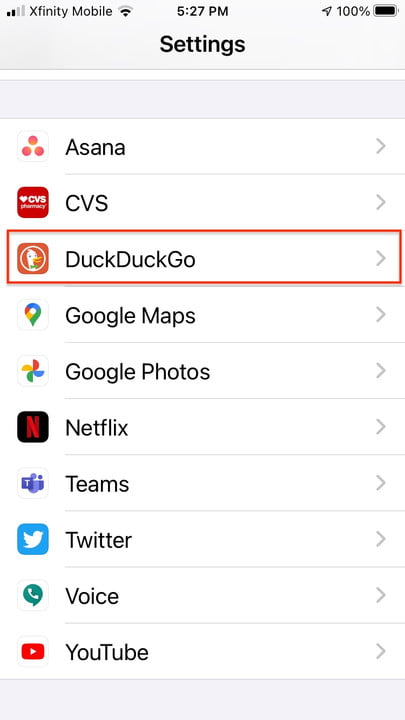Users of Apple’s mobile devices have long implored the company to let them choose their own default email client and web browser. Apple has finally granted that wish with iOS 14 and iPadOS 14. Now, iOS and iPadOS users can not only choose which web browser and email client to use on their mobile device, they can designate several popular third-party apps as default apps. That means if you tap a link in an email or an email link from a web page, for example, it will now open your chosen default app rather than the Apple app the company chose for you. With iOS 14 and iPadOS 14, you can now use your preferred email client and web browser for almost everything.
It’s early days for this feature, so there are still a limited number of email clients and web browsers you can set as alternate defaults, though inevitably that number will expand over time. Right now you can replace the default Apple Mail with the following apps: Google Gmail, Microsoft Outlook, Boomerang, Polymail, and HEY. Similarly, there are just a few web browsers that can replace the default Apple Mobile Safari: DuckDuckGo Privacy Browser, Firefox, Google Chrome, Microsoft Edge, and Brave, though we anticipate that Opera may soon be added to the roster. We show you an easy way to change these settings, which is the same process on both your phone and your iPad.
How to swap out Mail and Safari default apps
First be sure to update your mobile OS to 14.0.1, as a bug in the earliest version caused defaults to be automatically reinstated to Mail and Safari after restarting your device. Also, make sure the app you want to sub in is already downloaded to your device.
For email clients, go to Settings > [App] Name > Default Mail App.
For web browsers, go to Settings > [Browser] Name > Default Browser App.
Every installed default app appears on those screens, so if you go to Settings > Chrome > Default Browser App, you will see Firefox, Safari, and Chrome if they are already installed on your system. Note that qualified third-party web browsers must use Apple’s WebKit engine, so your preference will rely on proprietary app-based features rather than rendering speed or choice of rendering engine. For example, you may prefer a browser’s ad blocking, bookmark syncing, search shortcuts, or other features.
Be aware that some apps will open web links in internal web views that rely on Safari’s engine without switching you out to another app. They’ll continue to do that, even if you change your default browser. This can happen with email too where tapping a mail to link in Safari opens a draft within Safari rather than sending you to your newly designated default email app.
After setting a third-party app as a default, some apps may prompt you to open the link in the new default app. It’s also possible that third-party browsers will be somewhat slower than Safari because of Apple engineers’ greater familiarity with their own operating system or they may even have access to certain frameworks that other companies do not.
Look forward to more apps
Now that you can assign your own defaults with email and browser apps, other possibilities may be on the way, though there’s no specific timetable. For example, Facebook would just love to have you be able to choose its own Messenger over Apple’s Messages as the default messaging app in iOS. After all, this same capability is possible in Android, where you can use third-party apps to send and receive SMS messages. Similarly, many people would prefer to use Google Maps over Apple Maps or even Google Photos over iCloud. It remains to be seen how far Apple will open the door to third-party services to satisfy user desire for customization.

